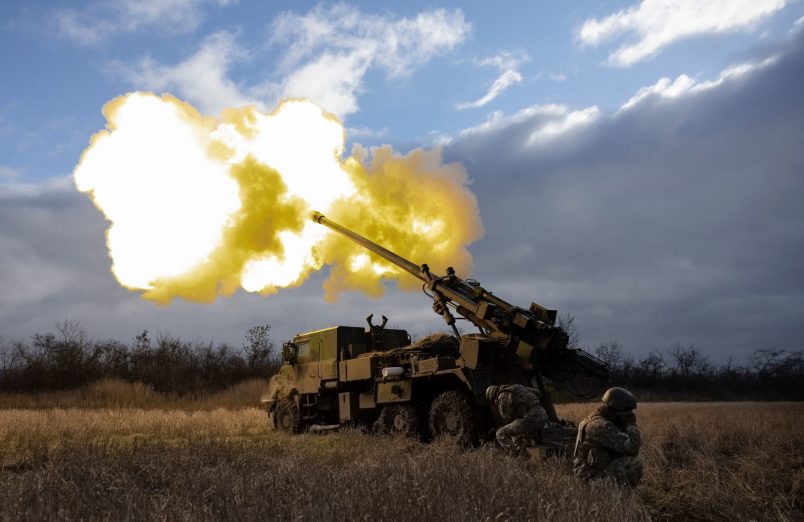If you spend time listening to Trump/Musk/Sacks/Bitcoin anti-Ukraine discourse you’ll hear the following argument: while the U.S. launched (by remote control presumably) its Russia/Ukraine proxy war to degrade Russian military power, quite the opposite has happened. Now the U.S. is running out of artillery shells, thus degrading its own military power. Meanwhile, Ukraine is doomed because we can’t send them any more and Russia can sustain its supply forever. In other words, the U.S. is owned; Russia is on the march; Ukraine is doomed.
This is a bogus argument. The U.S. hasn’t run out of artillery ammunition. Not even close. The U.S. has what amounts to a one-and-a-half-war doctrine. The U.S. needs to be able to fight two major wars simultaneously or, short of that, needs to be able to defeat its adversary in one major war while holding its adversary in the second at bay long enough to win war one and move on to winning war two. A bureaucracy like the Pentagon takes the official doctrine and computes what amount of human and material resources are required to make good on it and then is responsible for making sure all of that is available if and when those wars break out. This is basically what Joint Staffs do. That includes, among many other things, stockpiling enough artillery and ammunition to meet the needs of fighting those two wars. That’s an almost unimaginable amount of stuff that is still sitting in U.S. stockpiles.
What has happened is not that the U.S. has run out of anything. It’s that it’s bumping up against the amount the Pentagon thinks it needs on hand for its own purposes. And the U.S. has struggled to produce new ammunition at the rate Ukraine is using it. That is real. And that in part drove the U.S. decision to give Ukraine cluster munitions.
But Russia is also struggling. It’s running through ammunition and materiel at a rate it can’t sustain either. And, critically, Russia is in a war, operating on its own supply, while the U.S. is not. This makes sense. The U.S. is holding back the supplies it needs for its own use for when the U.S. itself is at war. But Russia is at war and in a major conflict — one that is not, as its propagandists claim, existential for the nation-state but may well be existential for the current government. One key advantage Russia has is that its armament production capacity is overwhelmingly in centralized state control, giving it a much freer hand in shifting economic capacity toward war-fighting. But again, Russia is the primary combatant in a major war. The U.S. isn’t.
I found a very interesting discussion of all these issues in this article by Max Hastings at Bloomberg. (It’s a paywalled site. But I checked, and as long as you haven’t read many of their pieces this month you should be able to read it.) As you can see, it’s a pretty complex issue — and those complexities are interesting in themselves and worth knowing. One of the global takeaways from this piece is that the whole global economy really isn’t equipped to sustain the material demands of this kind of conflict, a kind of intensive and sustained artillery and land war of indefinite duration that the world hasn’t seen in a very long time. A key theme through the piece is how the U.S. simply isn’t equipped to supply — at least without a major reordering of its peacetime economy — a war of this type and duration. The causes range from privatization and concentration of the arms industry, lack of sufficient industrial base and skilled workers and just not having had to supply a conflict like this in basically forever. Europe, in Hastings’ view, is in a far worse position still.
Everything is relative of course. It’s not surprising that the U.S. isn’t totally prepped to produce arms at this scale. Nothing like this has happened since the early days of the Cold War.
The takeaway from all this, in Hastings’ view, is that the outcome of this part of the conflict will likely come down to which side is best able to draw on the productive capacity of other countries. For the U.S. and NATO right now, that means especially countries like South Korea. For Russia, it means China, North Korea and Iran. It reminds us how critical it is that to date China has refused to become a significant supplier of armaments to Russia.
I don’t know enough about this topic to know if each of Hastings’ points are “right.” But it struck me as a knowledgeable and reasonable discussion of the issues. So I recommend it to you on that basis.






